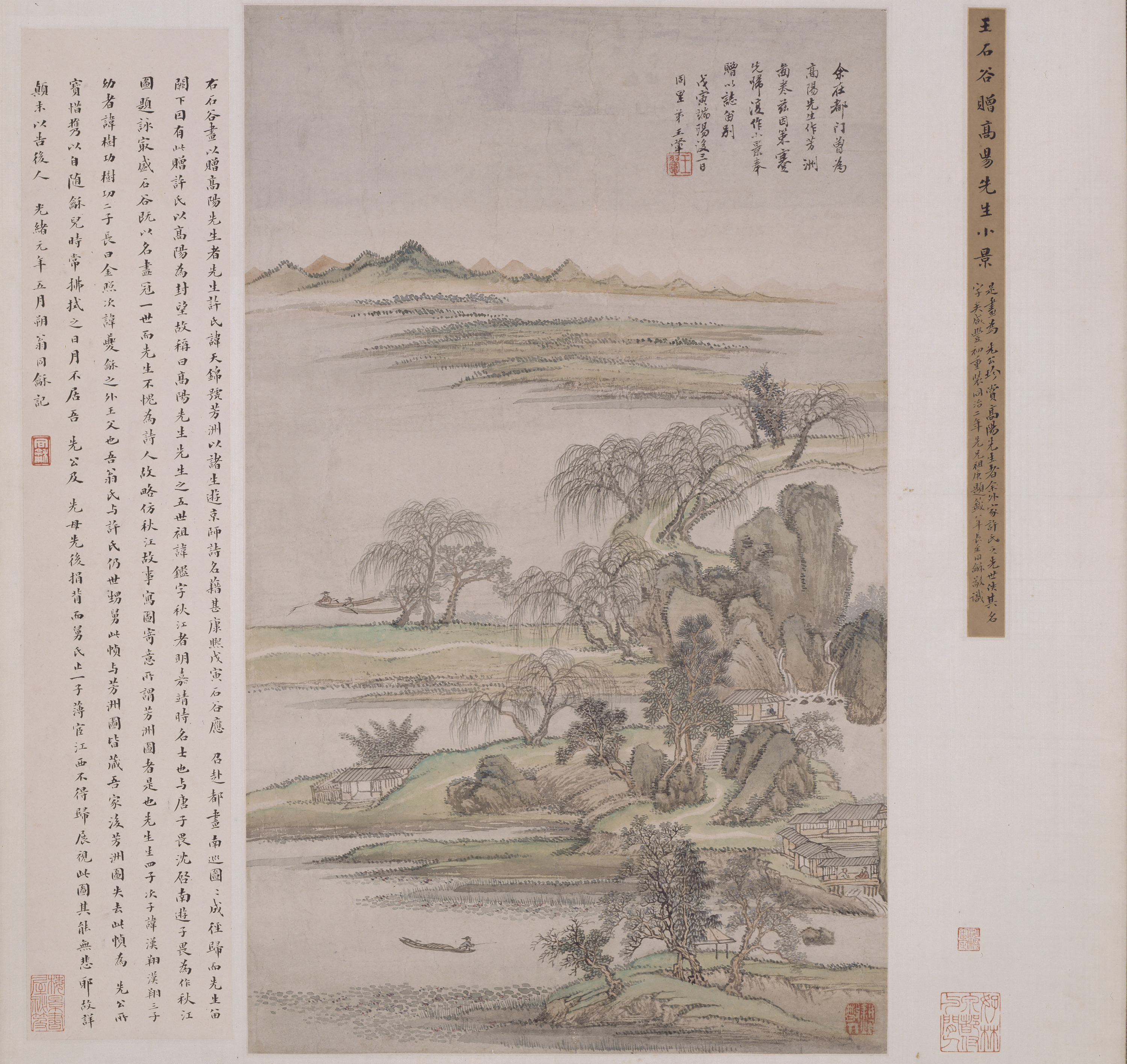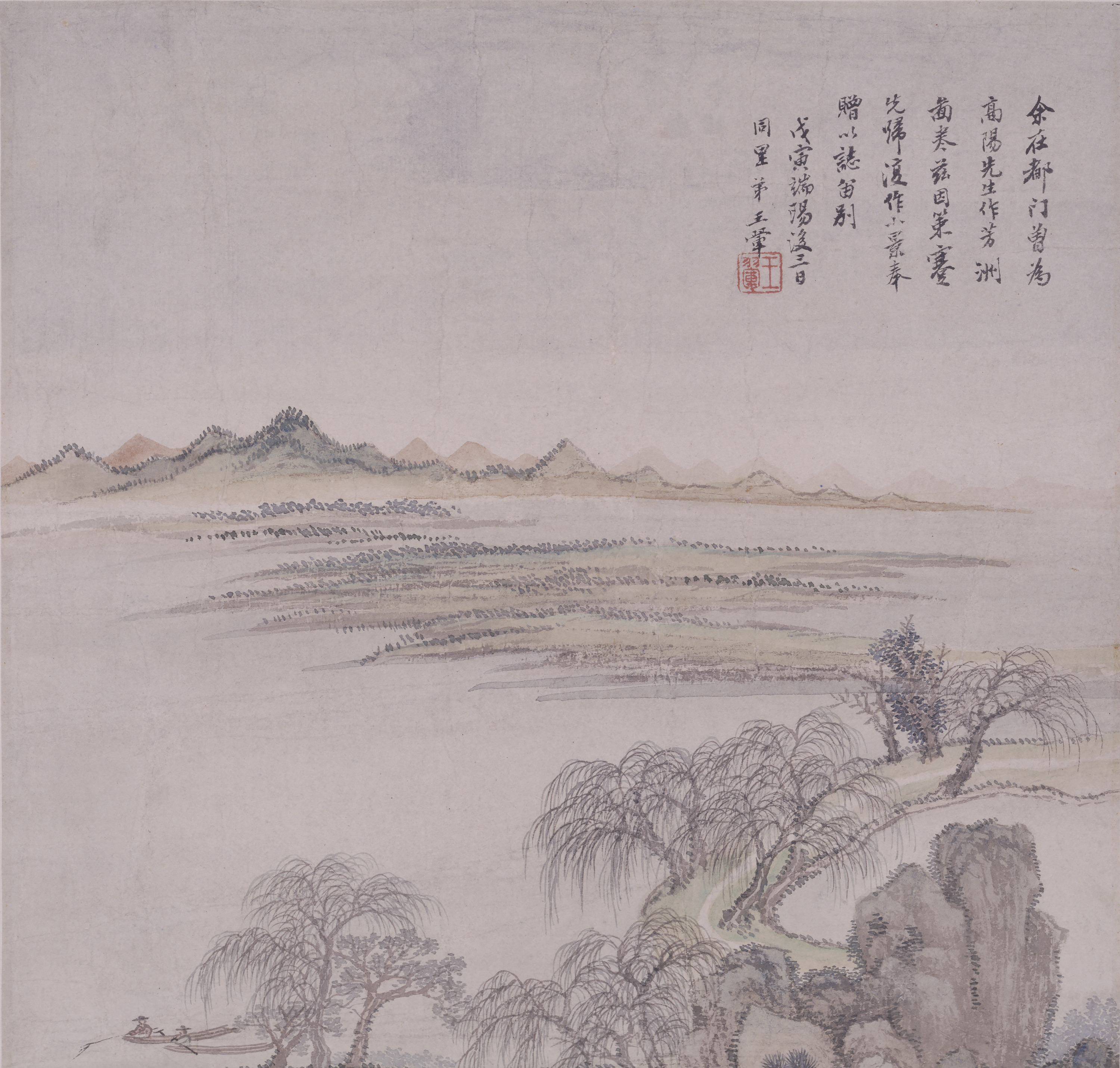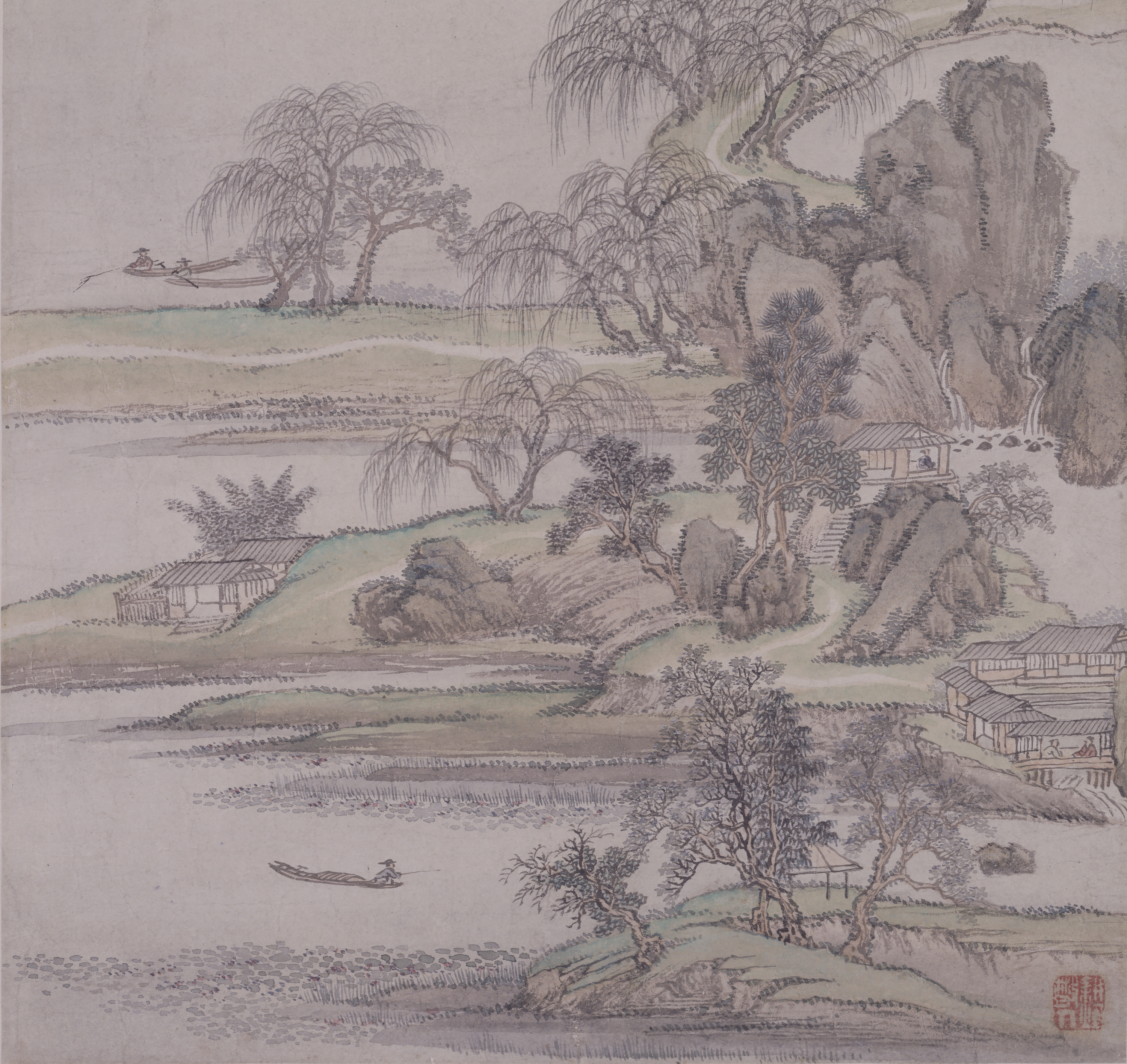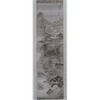- TOP
- Scenic View for Master Gaoyang
Overview
Scenic View for Master Gaoyang
- Museum No.
- AK895
Showing 1-6 of 3
| Title | Scenic View for Master Gaoyang |
|---|---|
| Designation | |
| Artist | Wang Hui |
| Category | Painting(A), Chinese Painting, Landscape Painting |
| Country | China |
| Period | Qing |
| Century | 17th |
| Year | 1698 |
| Quantity | |
| Materials | |
| Dimensions | Height 51.8cm Width 31.3cm |
| Inscription by | |
| Signature/Seals Etc | |
| Donor |
This object may be one within a set or the title of a set. To see all objects in the set, perform a Category Search by the Museum Number below, entering numerals only before the hyphen.

















Wang Hui (1632-1717), a master literati painter of the orthodox school in the Qing dynasty (1644-1911), known by the sobriquet Shigu, hailed from Changshou of Jiangsu Province. In 1691 (Kangxi 30), he was invited to Beijing to work as the principal artist on a series of paintings commemorating the river tour around Jiangnan, the southern Yangtze River region, by Emperor Kangxi. Although his painting series in handscroll format took five years to complete, Wang Hui stayed on in the capital and became friends with various officials and dignitaries, not returning to his hometown until the ninth month of 1698 (Kangxi 37). This small painting-dated the eighth day of the fifth month of the same year and rendering nostalgically a scene from his hometown, which he had not seen for many years-was presented to his friend, Xu Tianjiang (known as Gaoyang), also from Changshou, who was on his way back. The detailed use of brush and ink is delicate and filled with poetic sentiment, making it among the best of Wang Hui's works. Added later to the mounting of the painting is an inscription by the modern literati and collector Weng Tonghe (1830-1964), in which he explains that Gaoyang was his mother's ancestor and that he, in turn, had inherited this painting.
China-Qing